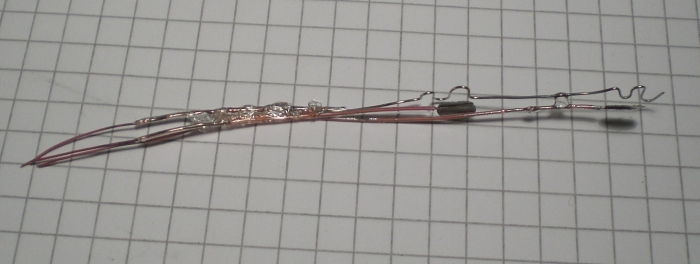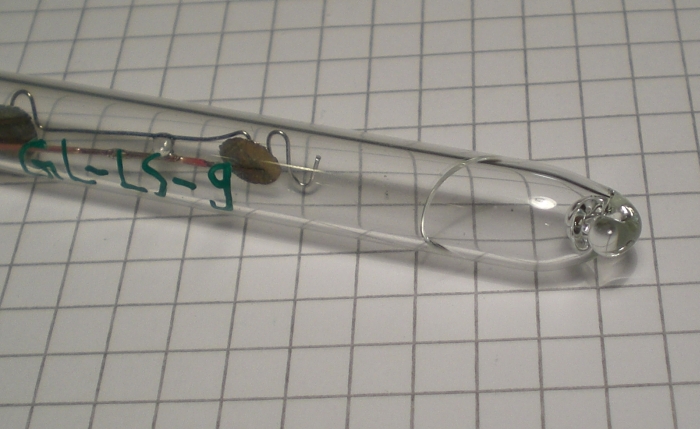www.jb-electronics.de » Elektronik » Nixie-Röhren » Selbstgebaute Nixies » GL-LS-9
GL-LS-9
Das Glow Lamp Lab Sample 9, oder kurz GL-LS-9, ist eine von mehreren Glimmlampen aus der Doppelpunkt-Experiment-Reihe. Gefertigt wurde sie aus 9mm-Kalknatron-Glasrohr, Dumet-Draht für das Quetschsiegel, Nickel-Blech für die Kathoden und Edelstahldraht für die Anode. Sie war ursprünglich mit Luft bei 15mbar gefüllt:

Leider ist die GL-LS-9 am Vakuumsiegel geplatzt; dennoch wird auch sie hier vorgestellt, denn anders als GL-LS-7 und GL-LS-8 besitzt die GL-LS-9 zwei separat ansteuerbare Leuchtpunkte:

Beim Verglasen des Dumet-Drahtes biegt sich dieser recht stark; das kann verhindert werden, wenn der Draht beim Verglasen und Auskühlen leicht gespannt ist. Hier ist das nicht so gut gelungen, es ist aber für ein Labormuster durchaus akzeptabel.
Das Quetschsiegel war erfolgreich, doch das Vakuumsiegel ein Fiasko; die ausgedünnte Stelle im Glasröhrchen war viel zu kurz sodass sich die Spannungen auf den Rest ausbreiteten und dort zu einem Riss führten:
